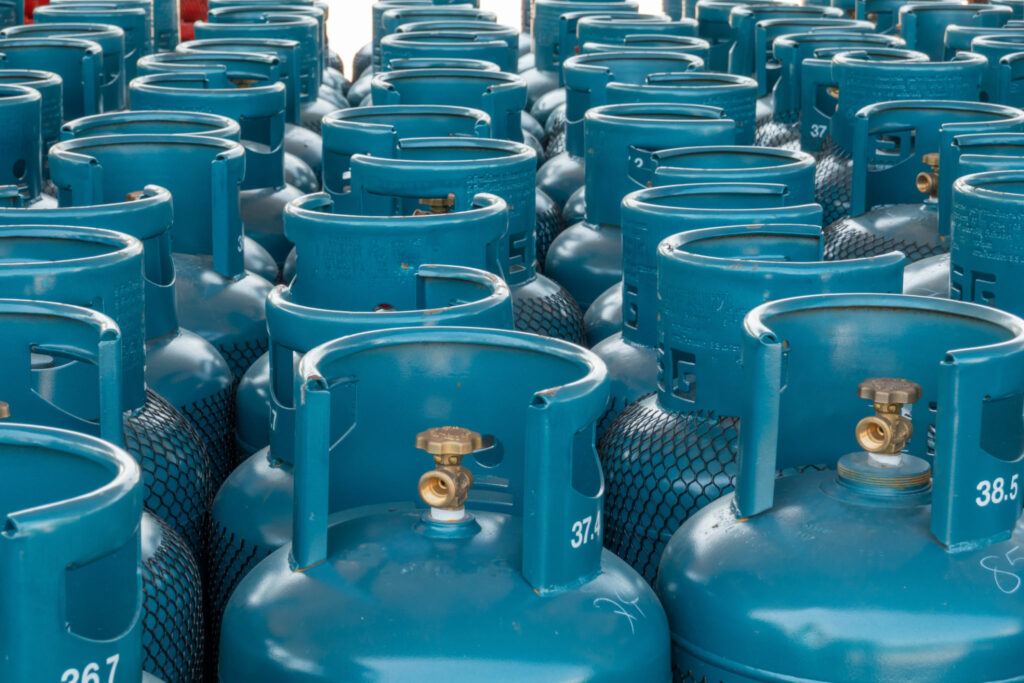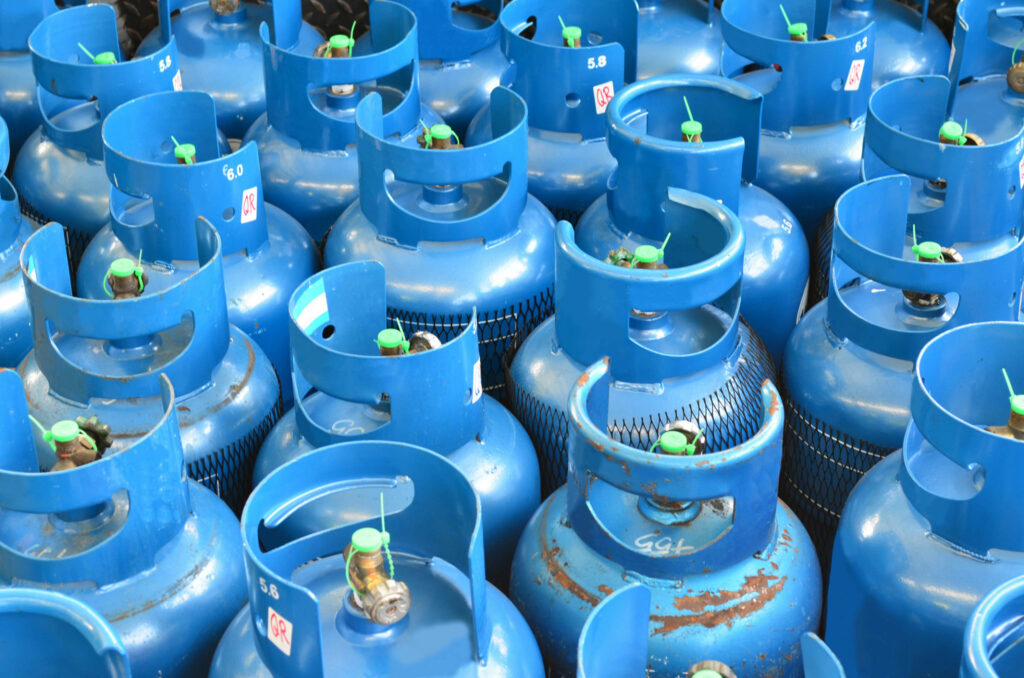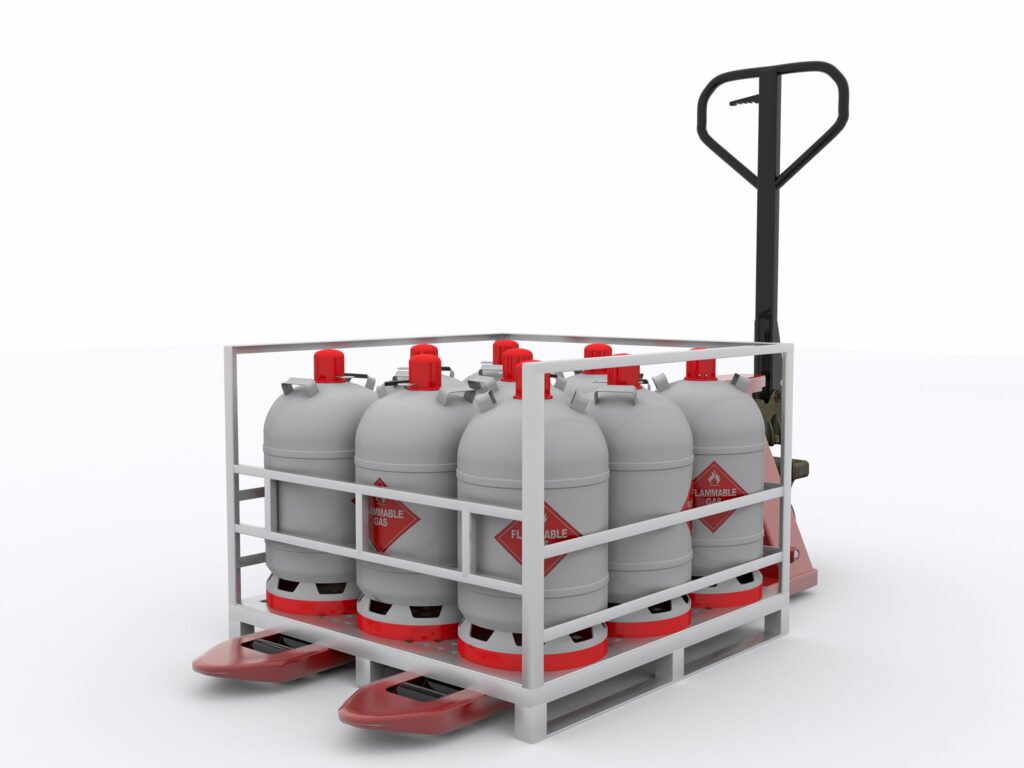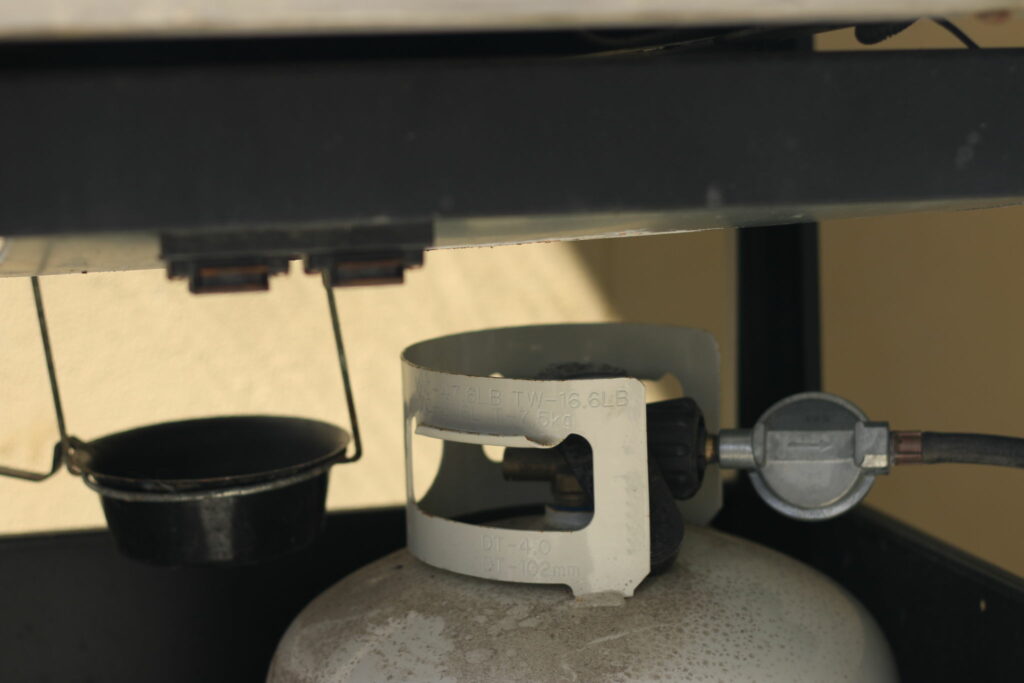If you are like most people, you’ll love to grill out in the summertime. There’s nothing better than knowing how to make juicy grilled chicken breast or how to grill the perfect steak. But if you’re using a traditional charcoal grill, you know that it can be a bit of a hassle to get it going just right.

With a propane grill, however, you can have your steaks sizzling in no time! In addition, propane grills are much easier to clean than charcoal grills.
But what kind of propane tank should you use for your grill? There’re quite a few different options available on the market today.
Below, I’ll take a closer look at some of the most popular types of propane tanks for grilling. For more information, keep reading.
What Is A Propane Tank For Grill, And What Are Its Benefits?

A propane tank is a type of fuel tank that is commonly used for grilling. Propane tanks come in plenty of sizes, from small portable tanks to large stationary tanks.
It’s important to choose the proper size tank for your grill so that you have enough propane to last the entire grilling season!
There’re many benefits to using a propane tank for your grill. Let’s take a closer look at some of the most notable benefits:
1. Convenience:
Propane tanks are very convenient to use. You can simply attach the tank to your grill and start grilling! There’s no need to hassle with charcoal or lighter fluid.
2. Ease Of Use:
Propane grills are user-friendly. You can light them with the push of a button, and they heat up quickly. You don’t have to hold for the charcoal to reach the perfect temperature. Also, propane grills are much easier to clean than charcoal grills.
3. Even Cooking:
Propane grills cook food more evenly than charcoal grills. This is because propane gas is distributed evenly throughout the grill, whereas charcoal can be unevenly distributed. When food is cooked evenly, it results in a tastier meal!
4. Temperature Control:
With a propane grill, you have much more control over the cooking temperature than you do with a charcoal grill. This means that you can cook your food exactly how you like it! Some propane grills even have temperature gauges so that you can monitor the temperature while you’re cooking.
5. Less Smoke:
When used properly, propane grills produce less smoke than charcoal grills. This is because propane gas is burned cleaner than charcoal. An added bonus of less smoke is that your food will not taste as smoky.
6. Easy To Clean:
Propane grills are largely easier to clean than charcoal grills. The simplicity of gas grills makes them a popular choice among backyard chefs. There’s no need to clean out ash and soot, which is why they’re ideal for those on a budget. Simply clean the grill after use, and you’re done!
7. Portable:
Many propane tanks are small and portable, making them easy to take with you on the go. Whether you’re tailgating or camping, you can easily bring your propane grill with you!
8. Affordable:
Compared to other types of grills, propane grills are very affordable. You can find a quality propane grill for a fraction of the cost of a charcoal grill. For budget-conscious shoppers, propane grills are the way to go!
What Are The Various Types Of Propane Tanks?

Now that I’ve discussed the many benefits of using a propane tank for your grill, let’s take a look at a few of the different types of propane tanks that are available on the market. There’re three main types of propane tanks: portable tanks, stationary tanks, and refillable tanks. Let’s take a look at both type of tank so that you can decide which one is right for you.
· Portable Tanks:
As the name suggests, portable propane tanks are small and can be easily transported. They’re perfect for those who want to take their grill on the go! Portable tanks typically hold between 20 and 40 pounds of propane. If you have a small grill, a portable tank is all you’ll need. For larger grills, you may need multiple portable tanks.
· Stationary Tanks:
Stationary propane tanks are larger than portable tanks and are meant to be stationary. They’re often used for commercial purposes, such as in restaurants.
Stationary tanks can hold anywhere from 500 to 1,000 gallons of propane. One 500-gallon tank is enough to supply a small restaurant for a week! When the tank is empty, it must be refilled by a propane delivery company.
· Refillable Tanks:
Refillable propane tanks are similar to portable tanks, but they can be refilled when they run out of propane. It is a great option for those who don’t want to have to purchase a new tank every time they run out of propane.
Refillable tanks typically hold between 20 and 100 pounds of propane. As with portable tanks, you may need multiple refillable tanks for a larger grill.
How To Select The Right Propane Tank For Your Grill?

Now that you know about the different types of propane tanks, how do you choose the right one for your grill? The answer relies on a few factors, like the size of your grill and how often you use it. Let’s take a look at the factors so that you can make an informed decision about which propane tank is right for you.
1. The Size Of Your Grill:
When choosing a propane tank for your grill, the size of your grill is an important factor to consider. If you have a tiny grill, a portable tank should suffice. For bigger grills, you might require many portable tanks or a stationary tank.
2. The Type Of Grill:
The grill’s type will also play a role in choosing the right propane tank. If you have a charcoal grill, you won’t need as much propane as someone who has a gas grill. This is because charcoal grills use less propane than gas grills. If you wonder “what are the different types of grills” out there, I suggest you to check out other blogs on Grillcharms.
3. How Often You Use Your Grill:
If you only use your grill occasionally, a portable tank should be fine. However, if you use your grill frequently, you may want to consider a refillable tank so that you don’t have to purchase a new one every time you run out of propane.
4. The Climate:
If you live in a cold weather, you’ll need to make sure your propane tank is properly insulated so that the propane doesn’t freeze. This is especially important for portable tanks.
5. The Type Of Fuel:
There are two types of propane: liquid propane and vapor propane. Most grills use liquid propane, but some newer models use vapor propane. Ensure you know which kind of fuel your grill uses before purchasing a propane tank.
6. The Size Of The Tank:
Propane tanks come in plenty of sizes, from small portable tanks to large stationary tanks. Choose a size that will fit your needs. If you’re not sure how much propane you’ll need, ask a salesperson for help.
7. The Brand:
There are many different brands of propane tanks on the market. You should do some research to find a brand that is reputable and has good reviews.
8. The Price:
Propane tanks vary in price depending on their size and features. Compare prices from different retailers to find the best deal.
9. The Warranty:
Some propane tanks come with a warranty. This can be helpful if you have problems with your tank in the future.
10. The Return Policy:
Before purchasing a propane tank, find out the store’s return policy. This way, you can return the tank if it’s not the right size or doesn’t work for your grill.
How To Refill A Propane Tank?

If you have a refillable propane tank, you’ll need to know how to refill it when it runs out of propane. Here’s the step-by-step guide on how to refill a propane tank:
1. Turn Off The Valve On The Empty Tank.
First step is to turn off the valve on the empty tank. This will prevent any propane from leaking out. If the valve is hard to turn, use a wrench to help you.
2. Connect The Full Tank To The Empty Tank.
Next, you’ll need to connect the full tank to the empty tank. Make sure the valves on both tanks are turned off before doing this. On most tanks, there will be a coupling device that you can use to connect the two tanks.
3. Open The Valve On The Full Tank.
Once the tanks are connected, you can open the valve on the full tank. It will allow the propane to flow from the full tank to the empty tank. For safety reasons, it’s best to do this outdoors.
4. Close The Valve On The Full Tank When The Empty Tank Is Full.
Once the empty tank is full, close the valve on the full tank. It prevents any more propane from flowing into the empty tank. While the valve is closed, disconnect the full tank from the empty tank.
5. Disconnect The Tanks And Turn On The Valve On The Empty Tank.
Finally, disconnect the tanks and turn on the valve on the empty tank. It lets you utilize your grill once again. In case you’re wondering, the process of refilling a propane tank is similar to filling up a gasoline tank at a gas station. The only difference is that you are using a different type of fuel.
Conclusion
So, now that you know a little more about the different types of propane tanks available for your grill, what type will you choose? Keep in mind the amount of propane you’ll need, how often you plan on using your grill, and where you live. If you have any other inquiries about choosing the right tank for your needs, don’t hesitate to reach out to GrillCharms. Now get grilling!
- The 9 Best BBQ Grills for Smoking Brisket - December 29, 2022
- 6 Mouth Watering Grilled Shrimp Recipes - September 16, 2022
- 6 Delicious Grilled Desserts - September 16, 2022

